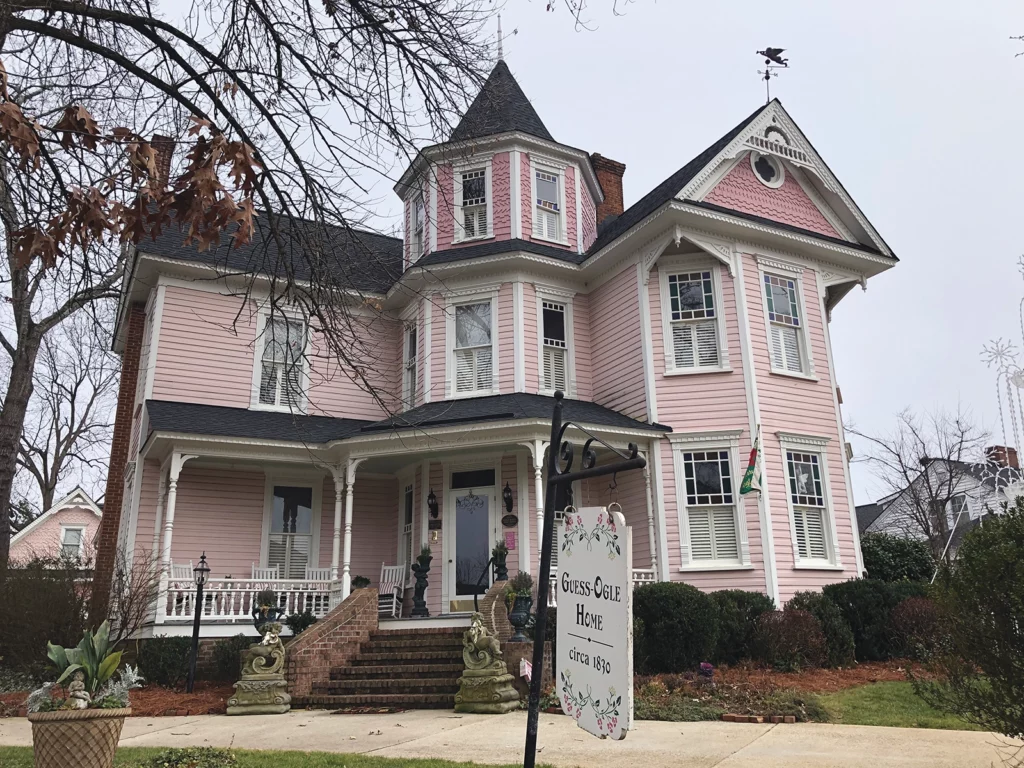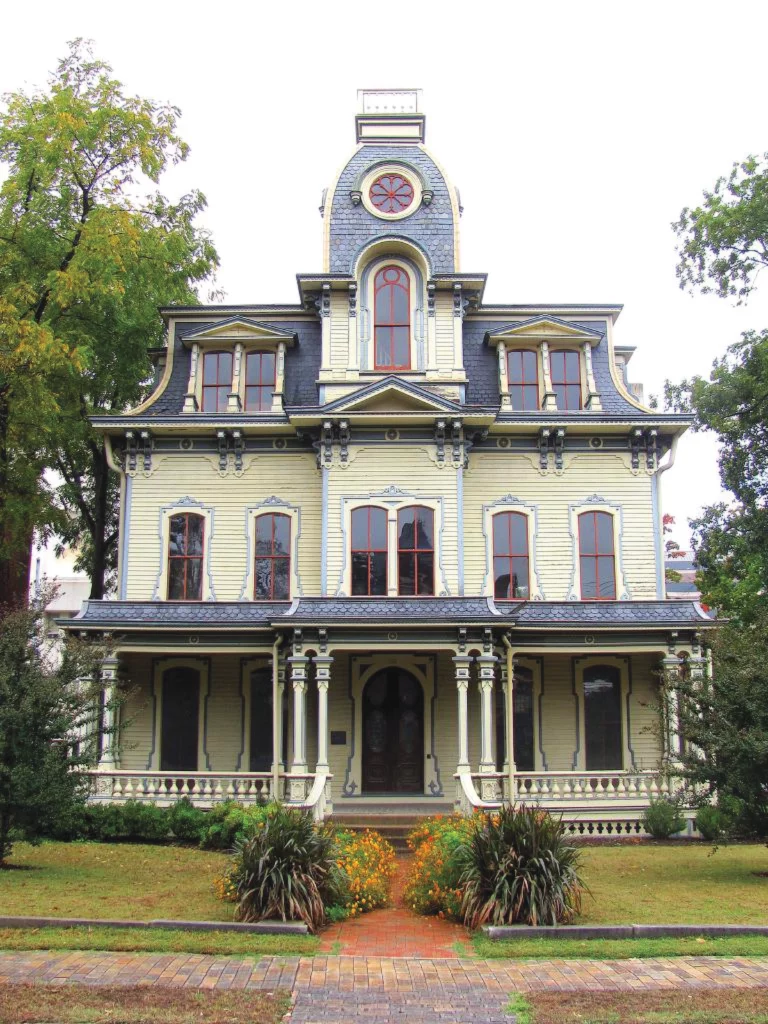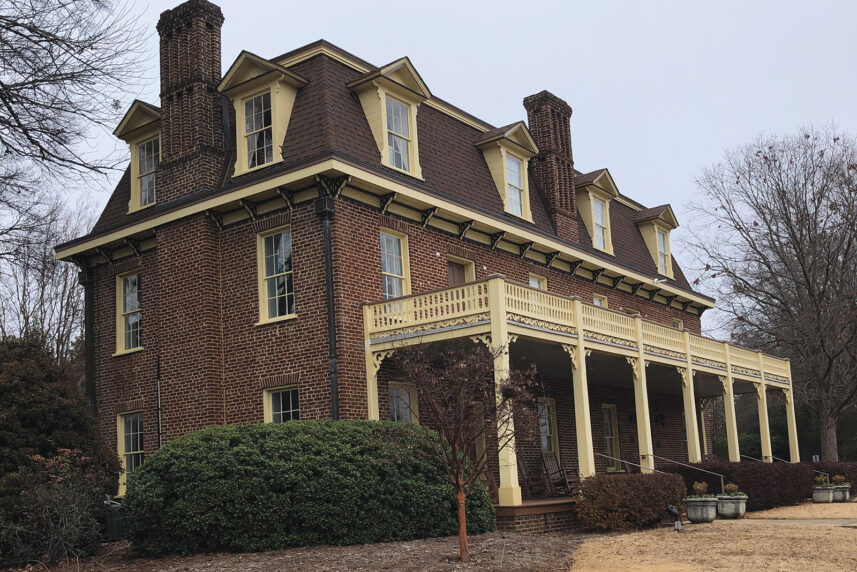Article:
The House That Cary Built
BY ERIC MEDLIN
About 150 years ago, Cary was little more than a bundle of houses and a stop on two railroads. A small community with little to distinguish it from hundreds of other towns that dotted the North Carolina Piedmont, Cary was about to receive a building that would add culture, class and a bit of Paris to western Wake County. The Page-Walker Hotel, topped by a striking mansard roof, would symbolize the little town’s growing prosperity and herald its eventual development as one of North Carolina’s largest cities.
While Cary was not incorporated until 1871, it was founded in the 1850s, and soon became a junction for the North Carolina Railroad and Chatham Railroad. The arrival of the latter in 1868 brought the budding community newfound wealth and prestige. It also led to a substantial number of visitors, many of whom needed accommodations for a night or two before continuing their journey to Asheville or New Bern.

A STATELY HISTORY
Allison Francis “Frank” Page stepped in to meet this demand. The founder of Cary, Page would become the ancestor of one of North Carolina’s most distinguished families. His eldest son, Walter Hines Page, would become the U.S. Ambassador to Great Britain, while his other sons became state cabinet members and gubernatorial candidates. But before this fame, the elder Page was a lumber magnate interested in making money from the town’s many travelers. He constructed a second empire-style brick hotel in 1868 at a point near both railroad lines. The structure was two-and-a-half stories tall, containing sitting and dining rooms on the first floor and bedrooms on the second. Page’s wife had experience in the hotel business and likely managed it before 1878, when Mrs. A.J. Clegg (first name unknown) became the proprietor.
Page, the likely designer of the hotel, capped off his new establishment with a mansard roof. This term describes a roof that slopes twice with angles on all four sides. It is best known for its role in French architecture, having been named for François Mansart, a French architect from the Old Regime. Mansard roofs decorated thousands of French buildings lining the avenues of Paris following renovations managed by Baron Haussmann, a French administrator known for managing urban renewal projects that helped modernize Paris. The roofs had multiple purposes: bringing light into attics, overcoming height restrictions—even gaming a French tax system based on the number of windows a building had.
But abroad, the inclusion of the so-called French roof became a symbol of craftsmanship and luxury during the Gilded Age. It was one of the many architectural details that made up the eclectic Victorian style in which architects picked and chose elements of classical, Gothic, and other forms of architecture to make a statement about their work. A mansard roof showed a builder’s love of ornamentation and commitment to a style that was then in vogue.

EXTENDING THE ELEGANCE
Putting a mansard roof on an 1868 North Carolina hotel would have been meaningful in any town. The state had few mansard roofs at that time, and North Carolina was one of the poorest states in the Union, with high rates of illiteracy and only one town accommodating more than 10,000 residents. A mansard roof would remain out of reach for most homeowners, who could barely afford a simple pitched roof to cover their small houses. The mansard roofs that did appear over the next few decades were limited to a handful of homes and public buildings, such as the Guess-White-Ogle House in Cary, the Heck-Andrews House in Raleigh and the Craven County Courthouse in New Bern.
The Page-Walker Hotel made news in Cary and beyond. A November 13, 1877 edition of the Raleigh News described it as a “first-class house in every respect.” Owned by J.R. Walker after 1884 and run by his wife, Nancy Walker, the hotel hosted guests of the 1891 Southern Inter-State Exposition in Raleigh, which attracted visitors from over a dozen states. The hotel and its mansard roof helped Cary build a reputation for elegance and upper class living, which was reinforced by the exclusive Cary High School, incorporated in 1896, along with several Victorian houses downtown. The town continued to grow during the early 20th century.
By the 1920s, Cary had electricity and a paved road to Raleigh. The town later grew considerably with the opening of Research Triangle Park, located less than 10 miles from its downtown core. Cary’s population doubled every decade between 1950 and 2000. This growth went along with a decline in rail travel and a subsequent deterioration of the Page-Walker Hotel. It changed hands numerous times before being bought by the Cary Town Council in 1985. Now, the hotel is an arts center and event space that also houses the Cary Heritage Museum.
Known today as the Page-Walker Arts and History Center, it boasts the only mansard roof in Cary built before the late 20th century and is one of only a handful remaining in Wake County. Those roofs were built to show Victorian elegance and extravagance. Cary’s emphasized a town on the move—one that had high hopes for municipal growth in the late 19th century. The mansard roof symbolized what Cary believed it could—and has—become: a sprawling, prosperous city with historical significance.



